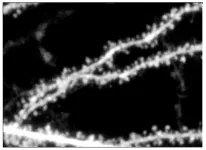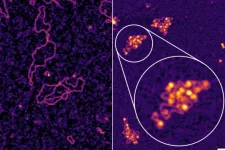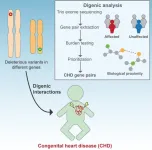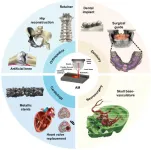New knowledge portal adiposetissue.org enhances obesity and metabolism research with centralized data
2025-02-20
(Press-News.org)
Addressing the Challenge of Dispersed Data
For years, adipose tissue research has generated vast amounts of omics data, but these datasets remained scattered across different repositories, making comprehensive analysis challenging. Adiposetissue.org now brings insights together, integrating transcriptomic and proteomic with clinical data from more than 6,000 individuals, enabling researchers to explore obesity-related changes, weight-loss effects, and cellular mechanisms with unprecedented depth.
“We developed this knowledge portal to make adipose tissue data accessible to everyone, even those without expertise in bioinformatics,” says Dr. Lucas Massier, researcher at the Helmholtz Institute for Metabolic, Obesity and Vascular Research (short: HI-MAG) – a Helmholtz Munich institute at the University of Leipzig and the University of Leipzig Medical Center.
A key part of this effort was led by early-career scientists Jiawei Zhong and Dr. Danae Zareifi from Karolinska Institutet. “We ensured that data from different sources could be compared by standardizing terminology. Since little proteomic data was available, we also generated new protein profiling datasets, improving the portal’s ability to verify gene activity findings,” Jiawei Zhong and Danae Zareifi explain.
“By breaking down barriers to data accessibility and enabling large-scale analysis, Adiposetissue.org is a powerful resource for researchers studying adipose biology and metabolic diseases,” says Prof. Mikael Rydén, head of the endocrinology unit and co-leader of the Rydén & Mejhert lab together with assoc. Prof. Niklas Mejhert at Karolinska Institutet and Steno Diabetes Center Copenhagen. “This has been a major collaborative effort, and we will continue expanding the portal with new results in future updates.”
Key Features of Adiposetissue.org
Comprehensive data integration: The platform aggregates reprocessed datasets from 67 studies, ensuring consistency and statistical robustness.
User-friendly access: It is designed for both experienced bioinformaticians and researchers without advanced computational expertise.
Advanced analysis tools: The platform includes customizable modules for gene exploration, single-cell and spatial transcriptomics, and perturbation studies.
Dynamic and evolving resource: Future expansions will incorporate brown adipose tissue data, additional clinical cohorts, and interspecies comparisons.
Visit https://www.adiposetissue.org/.
About the Researchers
Dr. Lucas Massier, Junior research group leader at the Helmholtz Institute for Metabolic, Obesity and Vascular Research (short: H-MAG) – a Helmholtz Munich institute at the University of Leipzig and the University of Leipzig Medical Center, and scientist at Karolinska Institutet
Prof. Mikael Rydén, Head of the endocrinology unit at the Department of Medicine (H7) at Karolinska Institutet, senior consultant at the Karolinska University Hospital and researcher at Steno Diabetes Center Copenhagen
Assoc. Prof. Niklas Mejhert, Endocrinology unit at the Department of Medicine (H7) at Karolinska Institutet, and researcher at Steno Diabetes Center Copenhagen
Jiawei Zhong, PhD student, Department of Medicine (H7) at Karolinska Institutet
Dr. Danae Zareifi, postdoctoral fellow, Department of Medicine (H7) at Karolinska Institutet
About Helmholtz Munich
Helmholtz Munich is a leading biomedical research center. Its mission is to develop breakthrough solutions for better health in a rapidly changing world. Interdisciplinary research teams focus on environmentally triggered diseases, especially the therapy and prevention of diabetes, obesity, allergies, and chronic lung diseases. With the power of artificial intelligence and bioengineering, researchers accelerate the translation to patients. Helmholtz Munich has around 2,500 employees and is headquartered in Munich/Neuherberg. It is a member of the Helmholtz Association, with more than 43,000 employees and 18 research centers the largest scientific organization in Germany. More about Helmholtz Munich (Helmholtz Zentrum München Deutsches Forschungszentrum für Gesundheit und Umwelt GmbH): www.helmholtz-munich.de/en
END
ELSE PRESS RELEASES FROM THIS DATE:
2025-02-20
Building on more than two decades of research, a study by MIT neuroscientists at The Picower Institute for Learning and Memory reports a new way to treat pathology and symptoms of fragile X syndrome, the most common genetically-caused autism spectrum disorder. The team showed that augmenting a novel type of neurotransmitter signaling reduced hallmarks of fragile X in mouse models of the disorder.
The new approach described in Cell Reports works by targeting a specific molecular subunit of “NMDA” receptors that they discovered plays a key role in how neurons synthesize ...
2025-02-20
In their effort to answer a decades-old biological question about how the hepatitis B virus (HBV) is able to establish infection of liver cells, research led by Memorial Sloan Kettering Cancer Center (MSK), Weill Cornell Medicine, and The Rockefeller University identified a vulnerability that opens the door to new treatments.
The team successfully disrupted the virus’s ability to infect human liver cells in the laboratory using a compound already in clinical trials against cancer — laying the ...
2025-02-20
Large birds – our closest relations to dinosaurs - are capable of technical innovation, by solving a physical task to gain access to food.
This is the first time scientists have been able to show that palaeognath birds such as emus and rheas can solve tricky problems.
In the study, published today in Scientific Reports, emus, which have previously been called the ‘world’s dumbest bird’ were able to create one new technique to access food (lining up a hole with a food chamber) and moved the hole in the most efficient direction towards food in 90% of cases. A male rhea ...
2025-02-20
New York, NY [February 20, 2025]—Scientists at the Icahn School of Medicine at Mount Sinai and collaborators have identified novel genetic interactions that may contribute to congenital heart disease (CHD), a common birth defect. Details on their findings were reported in the February 20 online issue of The American Journal of Human Genetics [DOI: 10.1016/j.ajhg.2025.01.024].
“Our research reveals the potential for digenic inheritance—where two genes work together to cause disease—expanding our understanding of the genetic underpinnings of congenital heart ...
2025-02-20
About The Study: The results of this study suggest a modest increase in the risk of nonarteritic anterior ischemic optic neuropathy among individuals with type 2 diabetes associated with semaglutide use, smaller than that previously reported, and warranting further investigation into the clinical implications of this association.
Corresponding Author: To contact the corresponding author, Cindy X. Cai, MD, MS, email ccai6@jhmi.edu.
To access the embargoed study: Visit our For The Media website at this link https://media.jamanetwork.com/
(doi:10.1001/jamaophthalmol.2024.6555)
Editor’s ...
2025-02-20
About The Study: This cohort study found significant inequities in incidence of behavioral flags in the electronic health record among racially and socioeconomically marginalized pediatric patients. This finding was most pronounced for Black or African American patients younger than 8 years, suggesting that this phenomenon may be a response to Black families rather than specific patient behavior.
Corresponding Author: To contact the corresponding author, April Edwell, MD, MAEd, email April.edwell@ucsf.edu.
To access the embargoed study: Visit our For The Media website at this link https://media.jamanetwork.com/
(doi:10.1001/jamanetworkopen.2024.61079)
Editor’s ...
2025-02-20
Paxlovid does not significantly reduce COVID-19 hospitalization and mortality among vaccinated older adults, according to new UCLA-led research.
The study questions the assumption that Paxlovid’s effectiveness in reducing COVID-19 hospitalizations and deaths in unvaccinated adults also applies to vaccinated adults. Pfizer’s 2022 clinical trial found reduced COVID-19 hospitalization in unvaccinated middle-aged adults; while a subsequent 2024 clinical trial found no significant reduction in vaccinated middle-aged adults. Since most older Americans have already received two or more COVID-19 vaccines, Paxlovid’s effectiveness on vaccinated ...
2025-02-20
Biomedical metal implant materials are widely used in clinical applications, including dental implants, hip replacement, bone plates, and screws. However, traditional manufacturing processes face limitations in meeting customized medical needs, internal structural control, and efficient material utilization. For example, when producing complex-shaped titanium alloy parts using conventional methods, the material consumption ratio is as high as 10:1-20:1, leading to significant material waste.
As a result, ...
2025-02-20
Introduction
Oxidative stress, caused by an imbalance between reactive oxygen species (ROS) and antioxidant defenses, plays a central role in the development of non-communicable diseases (NCDs). These diseases, including cardiovascular disorders, diabetes, neurodegenerative conditions, cancer, and liver and kidney diseases, are among the leading causes of morbidity and mortality worldwide. Enzymatic and non-enzymatic antioxidants serve as the body’s primary defense against ROS, maintaining redox homeostasis and preventing cellular damage. However, when ROS levels exceed the capacity of antioxidant defenses, oxidative stress ensues, contributing ...
2025-02-20
New research shows that turtles are responding to climate change by nesting earlier.
Researchers monitoring nesting green and loggerhead turtles in Cyprus have discovered they are returning to their regular nesting spots earlier each year to compensate for rising temperatures.
In sea turtles, temperature determines the biological sex of offspring, with more females born when it is warmer, as well as fewer successful hatchings when it gets too hot.
Turtles also have “natal philopatry”, which means they return to nest in the area where they themselves hatched.
A research team from the University of Exeter and the Society for the Protection of ...
LAST 30 PRESS RELEASES:
[Press-News.org] New knowledge portal adiposetissue.org enhances obesity and metabolism research with centralized data





